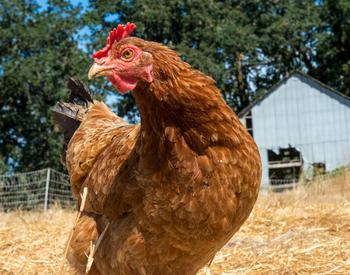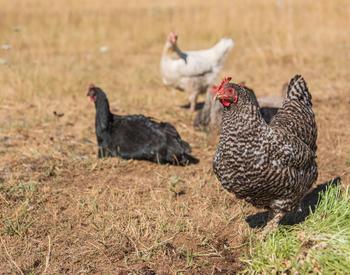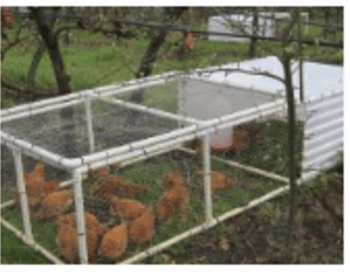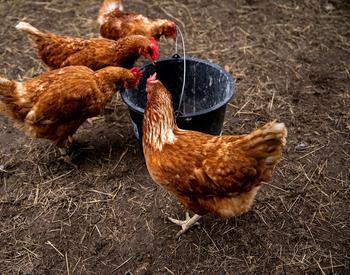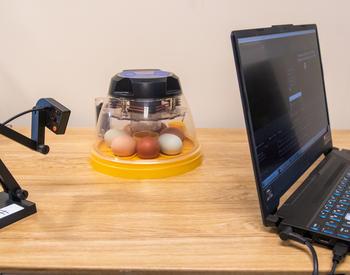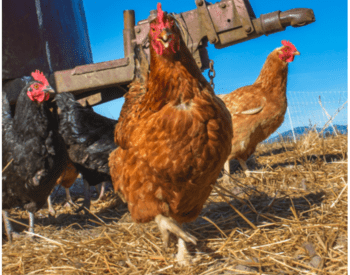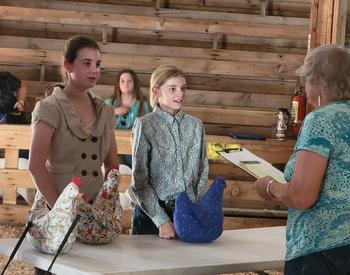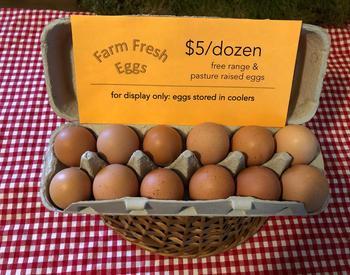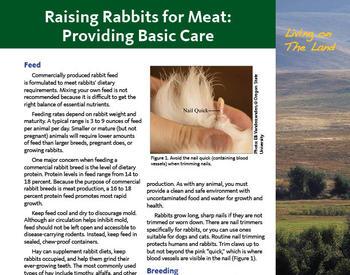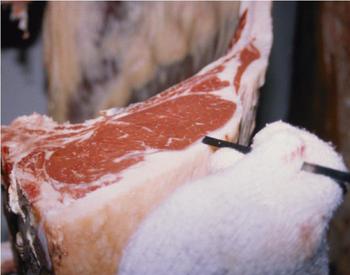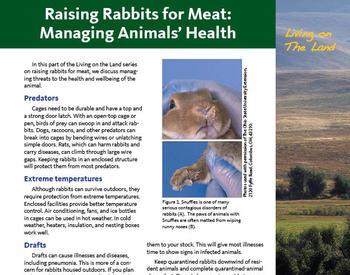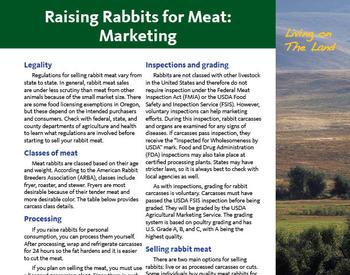As the weather begins to warm in early spring, it's time to think about purchasing chicks. If you already have a flock, this is the season to replace some or all of your chickens, if needed.
Chickens are quite suitable for most small farming enterprises. The birds produce eggs and/or meat and are a source of great nitrogen-rich fertilizer for the garden.
Chicks are readily available from local feed stores or by mail-order. Purchasing chicks by mail has been done for many decades and is quite safe.
To have a successful flock, both large- and small-scale producers must follow a few simple practices.
Choosing a breed
Breed choice can make or break a poultry operation. The wrong breed can increase costs and reduce productivity.
Some producers are interested in fancy breeds, while others just want a few chickens of any breed. Some growers are satisfied with cross breeds, while others are not.
When choosing a breed, ask yourself why you plan to produce chickens. Is your goal to produce eggs for home consumption or for sale? Do you plan to process, freeze and store the meat for year-round use? Your answers to these questions should guide your choice of breed.
Egg breeds
If you want just a few egg layers, almost any breed will do. However, the exotic (uncommon) breeds tend to have poor egg and meat production and higher mortality compared to common breeds and crosses.
Egg color is an important trait for most small-flock producers. Other than color, there is no real difference between white- and brown-shelled eggs. However, most people want chickens that produce brown-shelled eggs. Since the egg industry produces mostly white-shelled eggs, people tend to associate brown eggs with farm eggs.
Egg color depends on breed. Hens of the same breed will lay eggs that vary somewhat but are mostly the same color. Most breeds produce eggs with brown shells, although some produce white-shelled eggs. A few breeds lay eggs that are light blue to olive green. Individual hens always lay eggs of the same color.
Among the brown-egg breeds, a good choice for novice poultry producers is one of the American heavy breeds: Plymouth Rock, New Hampshire or Rhode Island Red. Even better would be "production reds" or "sex-links." These two breeds come from the heavy breeds but are generally hardier and more productive than pure-bred birds.
Some breeds are not suitable for egg production.
- Exotic pure-bred birds, such as Polish or Cornish, are striking in appearance but are poor egg producers.
- White Leghorns are excellent producers of white-shelled eggs. However, they have a flighty, skittish personality and are not well suited to small-flock production.
- Cornish Cross, or broilers, should be grown as meat producers. Their large size, fast growth rate, high feed consumption and poor egg production make them unsuitable for an egg flock.
Meat breeds
Any chicken can be used for meat. However, the best yield by far is from Cornish Cross, or broiler, chickens. Through decades of breeding, these birds have come to excel at fast growth and maximum yield.
If you don't want Cornish Cross birds, the American heavy breeds can suffice. However, compared to Cornish Cross, the cost of production is higher, and quality and yield are poorer.
In recent years, Red Broilers, or slow-growing broilers, have become popular with small producers. They have some of the traits of the faster-growing Cornish Cross but are not as efficient.
Preparing for chicks
Each bird requires at least 2 square feet of floor space. More space will give the birds more room to grow and will keep the bedding cleaner. However, too much space will encourage young chicks to wander far from feed and water.
Chicks should be grown on the floor with some form of bedding. Do not put chicks on a slick floor such as newspaper or cardboard. A slick surface can cause spraddles, a hip dislocation that can't be fixed. Start with about 4 to 6 inches of clean bedding on the floor.
Coarse (not fine) sawdust or wood shavings are the best bedding materials, especially for small flocks. These materials are readily available at any feed or farm store.
If you plan to use another type of bedding, choose a material that is soft, dry, clean and mold-free. Grass seed straw is adequate as long as it is not moldy. Chopping the straw dramatically improves its usefulness as bedding.
Make sure the birds are not exposed to drafts. Consider using a brooder ring, or draft shield. These shields consist of a ring of cardboard that is between 18 and 24 inches tall. They are especially important if the birds are kept in a barn or shed. The ring will also keep the birds confined close to the heat, feed and water.
You can remove the ring after a couple of weeks, or sooner, depending on conditions.
Temperature management
Chicks need supplementary heat for the first few weeks. For a small flock, heat lamps are the most economical heat source. For best results, use red heat lamps. White heat lamps may encourage birds to pick the feathers of pen mates.
One or two 250-watt heat lamps are adequate. If you use only one heat lamp, make sure it doesn’t burn out. With two heat lamps, you'll have a backup.
Measure the temperature at chick height about 12 inches from the hottest spot, which usually is directly under the lamp. The temperature should be 95°F for the first week.
After a week, begin reducing the temperature by 5 degrees per week. Continue until the temperature reaches the surrounding air temperature or until the birds are fully feathered. Temperature can be adjusted by raising or lowering the lamps. It's better to leave the lamp(s) on longer than to remove them too soon.
Another method of temperature management is to watch the birds. They will tell you if they are too hot or cold.
- If they are cold, they will huddle under the lamp, chirping loudly. Lower the lamp until this behavior stops.
- If they are hot, they will move as far from the lamp as possible.
- When the ideal temperature is reached, the birds will act normally; some will be eating, some drinking and some sleeping.
- When the birds lay down to sleep, they should form a “doughnut” around the heat lamp. The "doughnut hole" will be directly under the lamp.
It is imperative that the enclosure have both warm and cool areas. If the birds get too hot, they will move to a cooler spot and vice versa. If the chicks can't move closer to or farther from the heat lamp, they may become chilled or overheated.
Important note: Don't allow heat lamps to contact combustible materials, such as bedding or draft shields. These lamps can become very hot and could cause a fire.
Feeding
Begin feeding chicks a starter diet that contains about 20 percent crude protein. If you're growing Cornish Cross type chicks, feed a starter formula suitable for meat-type chickens.
For the first few days, you may want to place paper towels in the brooding area and sprinkle some feed on the towel. This will encourage the birds to begin eating.
For egg layers, switch to a grower/developer diet after about six weeks. At about 18–20 weeks of age, begin feeding layers a diet that contains about 15–16 percent protein and 3–4 percent calcium.
Meat birds can remain on the starter diet until slaughter.
Be sure to maintain the following practices:
- Keep feed available to the birds at all times.
- Be sure to use fresh feed—no more than four weeks old.
- Feed your birds from feeders. Begin with a couple of small troughs and switch to larger troughs or hanging tube feeders later.
- Provide enough feeder space so that all of the birds can eat at the same time. Limited feeder space can lead to more back scratches and reduced growth.
The diet you purchase will contain all of the nutrients your birds need. Feed supplementation is not recommended.
Materials such as scratch, table scraps, garden trimmings and grass dilute the birds' nutrient intake and usually cause slight nutritional deficiencies. The result can be poor development. If you must supplement your birds' diet, feed only what they will clean up in about 15 minutes.
Water
Provide clean, fresh water daily. Use 1- or 2-gallon jug waterers, or drinkers, for the first week or so. Spread them around the enclosure so that the birds can find water in more than one location. As the birds get older, you can switch to larger tank waterers or automated water systems.
It's a good idea to put drinkers on a small piece of cardboard or wood. This will raise them above the litter and prevent litter from being kicked into the trough.
Clean drinkers daily, especially during the brooding period. Cleaning serves two purposes: it keeps drinkers clean, and it cools the water. Birds do not like to drink warm water.
Picking
Picking can cause localized feather loss, for example on the back, tail, or back of the head. Watch your birds carefully. If you notice feather loss on any of your birds or see that your birds are picking, act immediately.
The best way to stop picking is to trim your birds' beaks. Use a dog nail trimmer or toenail clipper to remove about one-fourth of the upper beak on all of your chickens. You will not lose points during judging if your birds have trimmed beaks, but feather-picked birds will lose points.
Learn more in PNW 477, How to Feed Your Laying and Breeding Hens.
